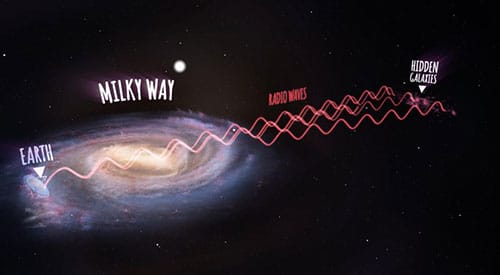(PCM) For quite some time now astronomers have been making the attempt to discover just what may lay beyond our galaxy in the previously unexplored areas of space. Earth is part of the Milky Way galaxy and up until now our galaxy’s large size had prevented scientists from fully being able to learn about just what else might be out there, however by using a new survey technique with the Australia-based Parkes radio telescope, astronomers have now discovered literally hundreds of galaxies that exist beyond our own.
In fact, astronomers have discovered an astonishing 883 galaxies that exist approximately 250 million light-years away from the Earth. Majority of these newly discovered galaxies are located in a region known as “The Zone of Avoidance” a term given to the area of space that was previously inaccessible to telescopes beyond the great bulge of the Milky Way galaxy.
This new research helps explain the “Great Attractor” phenomenon which has baffled astronomers for years. “The Great Attractor” is a term for the area of space which has such a strong gravitational pull that it begins pulling other local galaxies into its’ orbit. The gravitational pull is the equivalent to millions upon millions of suns and the Milky Way galaxy is just one of many that is being affected by its’ presence, moving towards them at more than two million kilometers per hour.
The other galaxies discovered by the research appears to be very similar to our own Milky Way galaxy and the scientists are hoping that with further study they will be able to get a better understanding of both the “Great Attractor” phenomenon, as well as, what is causing such a strong gravitational pull on our galaxy.






